Fun Facts About Orthodontics
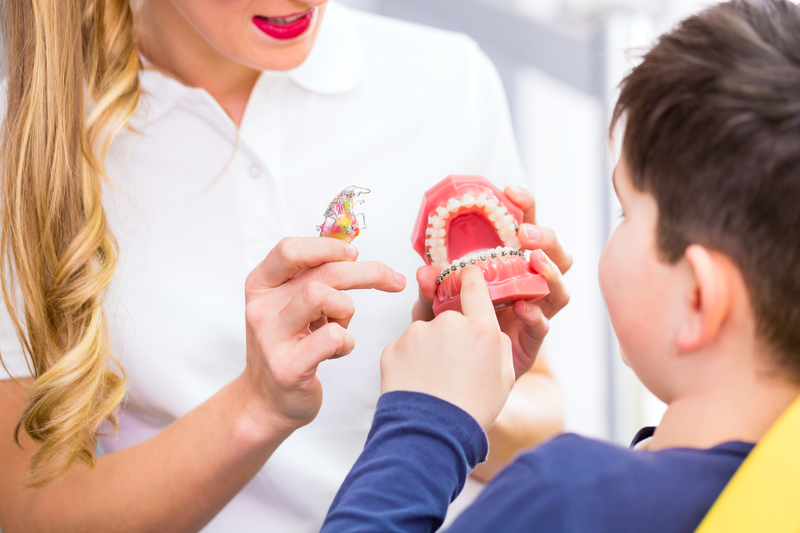
Did you know that an orthodontist is different than a dentist? Orthodontics is a dental specialty all its own, that has different goals and processes than what dentists do. There are many ways to fix the teeth and many methods that have been tried for many centuries. Find out the amazing history of orthodontics and some facts you may not know!
History of Orthodontics
People have been straightening their teeth since the time of the Ancient Egyptians, as can be seen from mummies from this era. Even the Romans and Etruscans used crude orthodontic straightening methods to get a better smile. Many philosophers hypothesized better ways to straighten the teeth. A Roman writer Celsus (1 A.D.) thought the teeth could be pushed into place. Pliny—around the same time—thought the teeth could be filed to be the ideal shape and size.
It wasn’t until 1728 that Pierre Fauchard—or the “Father of Dentistry”—made great strides with orthodontics. He first practiced crudely removing the teeth, replacing them straight, and tying them to other teeth so they could heal straighter. From his influence and others after him, modern orthodontics came to be. Matthaeus Gottfried Purmann developed dental impressions in the 17th century. In the early U.S. years, barbers and medical professionals experimented and performing small orthodontic treatments. This was until the first dental school was established in 1828.
Afterwards, J.S. Gunnell invented a form of headgear that was successful in straightening the teeth. Dental students and professionals figured out how to make a metal appliance to straighten individual teeth, which led to the now-used bracket and wire design in modern orthodontics. Before 1970, orthodontists wrapped wires around each tooth and required that headgear to straighten. This practice involved lots of metal in the mouth, which is why a better form (that we use today) was invented in the following years. Now, in the last 20 years lingual braces (braces behind the teeth) and Invisalign (transparent aligners) were invented to allow patients a hidden apparatus with orthodontics.
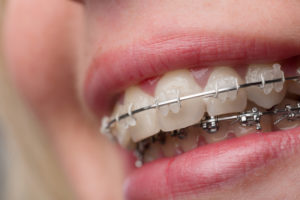
What Do Orthodontists Do?
Did you know that orthodontists are dentists? Every orthodontist is a dentist because they have completed dental school and then some. However, not all dentists are orthodontists. The standard requirements for dentists are to complete 4 years of undergraduate schooling and then 4 years at a dental school. They will have to pass exams and become certified to do dental work. Orthodontists do all of those 8 years, plus they complete 2-3 more years of orthodontics, training in bite and alignment correction and surgical orthodontics. All throughout their career, both dentists and orthodontists must do continuing education courses as well as pass tests to continue working.
An orthodontist will not fix your cavity even though they may spot the signs of tooth decay. Often, an orthodontist works closely with a dentist, as both professionals work on your mouth. What one professional doesn’t do, the other will do. Dentists do everything relating to tooth decay (cavities), gum disease and other oral health diseases as well as remedying dental emergencies. An orthodontist performs services that a dentist doesn’t do such as:
- Bite and alignment correction in children and adults (child orthodontics and adult orthodontics)
- Surgical orthodontics, which is surgery to help remedy a misaligned jaw or bite.
- Braces design, fitting, adjusting and complete process with lingual braces, ceramic (clear) braces, traditional metal, and Invisalign treatment.
- Training in placing temporary anchorage devices, which are tiny screws in the mouth that push, pull, lift or intrude teeth that are being straightened.
- Designing and creating retainer devices to keep bite, alignment and teeth in proper position.
Facts About Braces
- An orthodontist must complete 4 years of dental school, plus 3700 hours or specialized training in orthodontics to get their degree.
- There are more than 19,000 orthodontist members under the American Association of Orthodontics in the U.S., Canada and abroad.
- 1 in 4 people with braces are adults.
- Children make up another 1/4th of people wearing braces to correct bite and alignment.
- Because of modern technology, all four of your dental options (lingual, metal, ceramic and Invisalign) can straighten your teeth in about the same amount of time.
- It is possible to only get braces in either your upper or lower jaw if the other jaw is straight.
- The jaws stop growing as a child ages. That growth stops towards the end of the teenage years around 17 or 18. Straightening the teeth is effective for people after this age, but it may take longer than it would for children.
- Patients generally see their orthodontist every 6-10 weeks for braces adjustments. Patients with severe bite and alignment issues may need to come in more often.
- Orthodontists often usually have “DDS” or “DMD” after their names. This stands for “Doctor of Dental Surgery” and “Doctor of Dental Medicine”. Both are considered equal degrees, but the degree given depends on the dental school attended before orthodontic training.
- Materials used in metal braces are so light that they won’t set off metal detectors in airports.
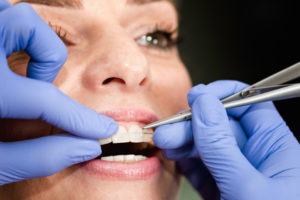
How Do Orthodontics Help People?
If you’ve never been to an orthodontist, you may wonder why you need one. Not everyone may need orthodontics to correct bite and alignment issues, but everyone should see an orthodontist at some point. The American Association of Orthodontics recommends that every person have an orthodontic visit between ages 7 and 8. This is prime time to detect bite and alignment issues that would lead to crooked teeth, speech impediments, oral hygiene diseases, and problems chewing, biting and functioning normally.
When issues are found, they can quickly be corrected so children can grow and develop normally. If a teen or adult wants to straighten their teeth to boost their confidence and success, they can receive braces starting around age 11. For specific questions about our orthodontic services, call Belmar Orthodontics today at (303 225-9016!
Choosing to Have Adult Braces

If you are an adult with crooked teeth, you may think that you already missed your opportunity to get braces. However, adult braces are very popular. In fact, at least 1/4th of all braces wearers are adults. You simply might not see braces on many of your peers because adults have a couple orthodontic options that stay hidden in the mouth. Find out if you should choose to have adult braces, what the benefits are, and what options you have to straighten your teeth discreetly!
Do Adults Wear Braces?
The American Association of Orthodontics recommends that every person have an orthodontic evaluation between the ages of 7 and 8. This is prime time for orthodontists to correct bite and alignment issues that can become severe as a child ages. However, not everyone knows that they need to see an orthodontist, nor do many people have the means to receive orthodontic care due to cost. That opportunity may come when you are an adult. Have you missed the mark if you’re already an adult instead of a child? Certainly not!
Orthodontic treatment is a bit harder when you are an adult, but it is not too tricky for us to manage. Orthodontists recommend that children and teens get braces for bite, alignment and issues with crooked tooth when young. This is because the jaws are still growing and the teeth and jaws are more moldable until a teen grows older. As an adult, the jaws have hardened into place, so shifting the teeth and jaws is much more difficult.
However, modern technology definitely allows adults to change their smiles as they please. In fact, 1/4th of all people wearing braces are adults! Adult braces are becoming more and more popular as jobs become more competitive. Adult braces can really give people the edge they need to succeed because it creates a more beautiful, straight smile.
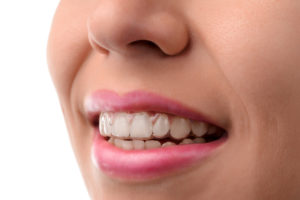
Benefits of Choosing Adult Braces
There is more than just the aesthetics of receiving adult braces. Getting braces can not only improve your appearance, but they can radically change your oral health. Did you know that your risk for tooth decay and gum disease is significantly less with braces? This is because the teeth become straighter, getting rid of all the nooks and crannies plaque and bacteria cluster in with crooked teeth. The teeth are easier to clean, and your smile looks much better, so you’ll actually want to clean your teeth more often.
Many people do love what adult braces can offer their smile. The main advantage is confidence. Many studies have been conducted on the confidence that a smile can bring not only to a person but to others. When you feel self-conscious of how your teeth look, you’re less likely to show your smile to others. This can happen even with children, who may become more introverted because they are self-conscious. However, when smiles are healthy and straight, people tend to show them off more. The more smiling, the more confidence a person feels and the more likely they are to be perceived as such.
The company that invented Invisalign actually conducted studies about this very thing. They found that people who had better, straighter smiles appeared much more confident than those with crooked smiles. The patients themselves felt 60% happier, more attractive and more successful, and others saw them as such. Those with straight smiles were more likely to land a job over their competition and were more likely to be successful with home, school and social life. They were also perceived as 72% more trustworthy just based on first impressions. The benefits of adult braces are endless and all benefit you!
What Options Do You Have?
Adults have all the orthodontic options available to them for straightening:
- Traditional Metal Braces: Consists of a metal bracket and wire design.
- Ceramic Braces: These are very similar to traditional braces, except they are made from white, ceramic material that helps hide them in the mouth. Ceramic material helps prevent tooth demineralization.
- Lingual Adult Braces: These are metal braces that fit behind the teeth and are bonded to the backs of your teeth. Molds are made of the teeth so that the metal can be custom-made to cover your teeth. This option is a preferred one among adults seeking adult braces.
- Invisalign: This orthodontic treatment consists of transparent aligners that are customized to your mouth with a digital machine. You will get a new aligner each week, which you place in your mouth like a retainer. They stay hidden in your mouth, can be removed for regular oral hygiene cleaning and eating, and you get a better smile!

What Can You Expect?
Many people aren’t quite sure what to expect from their first orthodontic visit, as orthodontists don’t do the same work that dentists do. Dr. Hardy will meet with you for an oral evaluation and orthodontics consultation. He will examine your bite and alignment and will determine your candidacy for specific procedures if they are needed. Oral health issues—such as periodontal (gum) disease—will have to be resolved before the teeth can be straightened.
If bite and alignment issues are not present, you can move forward with regular straightening treatment. Dr. Hardy will take impressions of your teeth and will plan out a trajectory of your orthodontic plan. This is where you can know how long you will wear braces and how your mouth should look by the end of your treatment. You will also choose which orthodontic option you would like (traditional, lingual, ceramic or Invisalign) so that appliances can be made to fit your mouth.
After your consultation, your next appointment will be your braces fitting. After that, it’s easy to care for your mouth between quick adjustment appointments. Always brush and floss your teeth, and do these two habits more often than you used to. If you are wanting adult braces, consider Invisalign or lingual braces, as these options keep your orthodontics concealed if you need them to be. For all your questions about adult braces, call Belmar Orthodontics today at (303) 225-9016!
Preventing Cavities During Braces
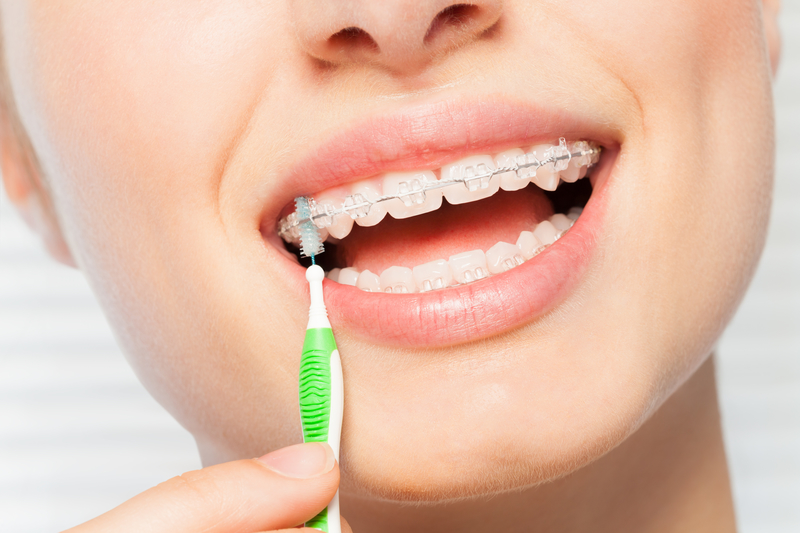
Braces is an exciting time for getting that straight smile you’ve always wanted. The not-so-exciting part about braces though, is that they give you a greater risk for cavities. Because there are appliances attached to your teeth, they can become havens for bacteria and plaque buildup. Proper oral hygiene, avoiding certain foods can help you prevent cavities during your time with braces!
Your First Orthodontic Appointment
Finding cavities before you get braces is key to ensuring that you have a healthy smile before getting brackets and wires on your teeth. With braces, you will meet often with your orthodontist to have your braces adjusted. However, you still need to go to your dental appointments to make sure you don’t have cavities during braces.
Traditional metal braces, ceramic braces and lingual braces all have brackets and wires that go on your teeth. Before you get fitted for these braces, you will have dental x-rays taken by the dentist to detect cavities. It’s very important to get your exam so tooth decay is detected. Otherwise, you could end up with large cavities during braces. If cavities are found, they must be fixed before we put your braces on.
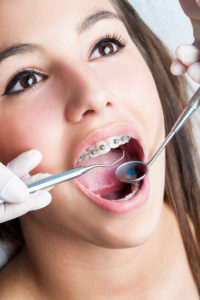
Oral Hygiene Is a Must
The status of your smile and your oral health will depend on what you do once you get your braces. The American Dental Association recommends brushing your teeth at least twice a day and flossing 1-2 times. That recommendation is for patients who don’t have braces. When you have braces, you have to be extra meticulous with oral hygiene practices and you will have to do them more than you used to. That means, brushing after every single meal if you can.
To avoid cavities during braces:
- Brush your teeth after every meal. Use a soft-bristled toothbrush with fluoride toothpaste, and brush for 2 minutes every time, making sure to go in all different directions to dislodge food.
- Floss your teeth. This is a habit many people skip with braces because it takes a bit more time. However, it’s time well spent. Floss at least twice a day, using threadable floss. This kind of floss allows you to thread it through the spaces between your teeth, pulling it through so you can floss like normal. It makes flossing a breeze and helps prevent cavities during braces.
- Use orthodontic cleaning tools. A waterpik is a great water-spraying tool that can help you dislodge stuck food. A braces brush (that looks like a Christmas tree brush) can get food out of brackets.
- Watch what you eat! More sugar means more cavities during braces. Limit how much sugar you eat. You want to avoid sticky, sugary foods such as taffy, Starbursts, dried fruit, gummies, fruit snacks, caramels, and anything similar.
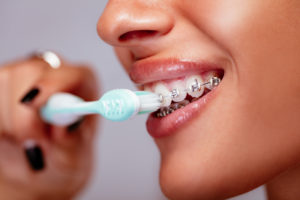
Developing Cavities During Braces
Sometimes, tooth enamel is simply weak and tooth decay happens, despite all your hard effort to avoid cavities. When you eat, sugars in your food mixes with mouth bacteria to create plaque. That plaque sticks to your teeth and slowly eats it away, creating decay. You only need plaque stuck in the right place to develop cavities during braces. When you have hidden tooth decay, you may start to feel symptoms such as a toothache, tooth sensitivity or pains with hot and cold. When you see these signs, get dental x-rays taken to see if you have cavities during braces.
If there is a cavity, you actually can have it fixed even if you have braces. It all depends on where the decay is. In most cases, cavities during braces can be fixed because many will lie on surfaces not covered with brackets or wires. You would have the decay drilled out and filled as you normally would. However, if you have a band on your teeth or brackets and wires right where decay is, we would have to remove the bracket or wire while you get it fixed at the dental office. We would then have you come back to our office to get your dental appliance reattached. Patients can sometimes develop such severe cavities during braces that they will need root canals. However, if you are taking care of your teeth, you won’t ever have to worry about that.
Best Option to Avoid Cavities
If you are worried about cavities during braces or have seen a family member get cavities during braces, then getting braces might make you nervous. However, no matter what braces option you choose, the benefits of a straight, beautiful smile can last a lifetime. It’s definitely worth it to get braces; you will just have to be careful to take care of them. If cavities during braces are a concern, consider the benefits of using Invisalign aligners. This is one of our most popular orthodontic options for teens and adults because it is a hidden option for straightening your teeth.
Invisalign transparent aligners are a series of custom-made aligners (like retainers) that fit incredibly snug to your teeth. We take digital calculations of your mouth, where we then design transparent aligners around the shape of your teeth and where we want them to be 18-24 months from that time. Each week, you will switch to a new aligner, which will slowly put pressure on different areas of your mouth, shaping the teeth into a straight line. The aligners are clear and designed to be virtually unnoticeable on your teeth.
When it comes to cavities during braces, you are the one that decides if you will get them with this orthodontic option. That’s because that are completely removable for eating, drinking, flossing and brushing your teeth. It takes less time to brush and floss because of this and there are no appliances on your teeth. This can reduce your risk for cavities during braces, especially if you already know that you have weak tooth enamel. For any questions about cavities during braces, call Belmar Orthodontics at (303) 225-9016!
Tips for Success and Happiness with Your Braces
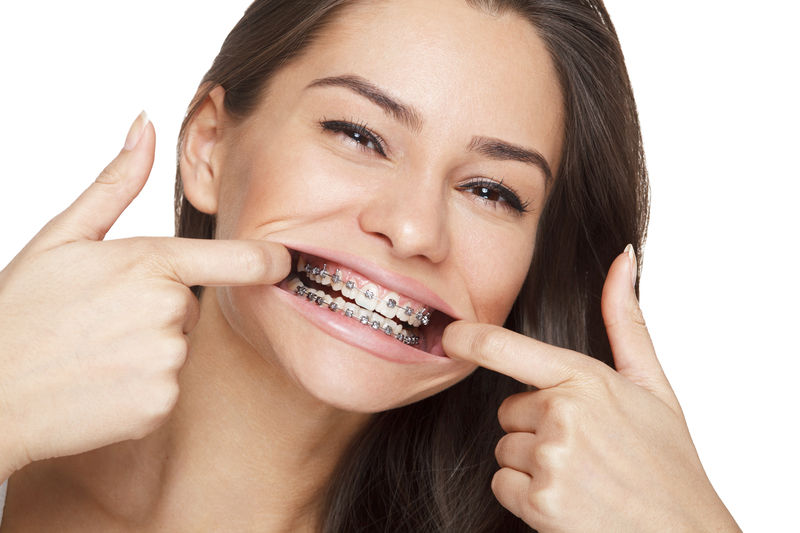
Many adults and teens feel like they will look childish with braces on. However, that still doesn’t stop more than 4 million people wearing braces each year in the U.S. Yes, braces are harder to clean and require more care. However, that care only takes a few extra minutes each day, and you have orthodontic options that can make you extremely happy with your braces. Find out how you benefit from orthodontics!
Your First Week with Braces
When you first get brackets and wires on your teeth, you will have tooth sensitivity for a few days. That sensitivity and soreness will wear off, but during that time, stick to soft foods such as pasta, yogurt, mashed potatoes, etc. Over-the-counter painkillers (like acetaminophen) can help curb pain that first week and at each braces adjustment.
Your braces will feel bulky in your mouth at first, but will quickly start to feel normal. Even though there are changes with braces, you can be successful with your treatment if you do everything the orthodontist tells you. This includes using your bands like they tell you, having good oral health and avoiding foods that can cause you trouble.
There are foods you want to avoid that will either break your brackets or wires or that will become stuck in them. Many foods on this list are also full of sugar, which is what makes plaque that coats your teeth. When plaque sits on the teeth, it decays them and erodes them. Avoid foods like:
- Hard candies
- Chewing on ice
- Apples, carrots, and hard fruits and veggies
- Popcorn (because of kernels), nuts and chunky peanut butter
- Chips and hard snacks
- Caramels, licorice, taffy, Tootsie Rolls, Starbursts, Sugar Daddies, Skittles and similar candies
- Corn on the cob
- Dried fruit, fruit snacks and gummies (which get stuck in brackets and teeth)
- Gum

Taking Care of Your Teeth
Caring for your teeth through proper oral hygiene is essential if you want to love your braces and if you want your teeth to be in good shape when they come off. Patients who skip brushing and flossing will end up with tooth decay, tooth erosion (worn away areas of the teeth) and stains on their teeth when the braces come off. Don’t let that be you! Follow these tips for taking care of your braces successfully:
- Brush, brush, brush! Aim for three times a day instead of just the recommended two times. The American Dental Association recommends that patients brush for at least 2 minutes every time, at least morning and night. Choose a soft-bristled toothbrush that will be more gentle on your teeth and switch out your brush every 3 months.
- Floss your teeth. Flossing is the thing that is most often skipped, especially by children and teens. However, flossing gets about 40% of your tooth surfaces that brushing misses. It is one of the only ways to dislodge stuck food that will decay your teeth. Floss 1-2 times a day. However, invest in flossers or threadable floss, which you can pull through the cracks in your teeth, getting under the wires. This makes flossing so much easier.
- Use a Waterpik and brush. Patients often get food stuck in their teeth that flossing and brushing can’t get out. A waterpik is a small device that shoots water. You shoot the water where you want to dislodge the food or particles in brackets or in between the teeth. A braces brush looks like a tiny Christmas tree. It can get all the gunk out of your brackets and wires with ease.
- Don’t chew on non-food items! Pencils, fingernails, and any other hard item can break your braces.
Benefits that Braces Can Give You
Some patients love their braces, while others don’t. If you are the latter, just remember why you are getting braces: you are looking forward to that beautiful, straight smile. You only have braces on for 1-2 years. If you get through that time, you get to have a straight, beautiful smile for life. Studies show that your smile goes a long way as well. It’s one of the first things others notice about you. In studies done about straight teeth vs. crooked teeth, the impressions others got were quite impressive:
- Invisalign (Align Technology) found that people with straight teeth were 45% more likely to be hired for a job.
- They were seen as 58% more likely to be wealthy and successful.
- People perceived people with straight teeth as healthier, happier, and even smarter than others.
- A whopping 73% of people were more likely to trust someone with straight teeth as well!
Whether you love your braces or not, just remember the amazing benefits that come from having a straight smile. It will not only improve your social life, but straighter teeth are easier to clean and less prone to tooth decay and oral health diseases as well.

Being Happy with Your Braces
The best way to be happy about your braces is to choose braces that you love. Some patients prefer metal braces because they are the most economical choice, while others like Invisalign because they are removable. Patients also enjoy clear, ceramic braces that are like traditional braces, but made from white, ceramic material. If you want the sturdiness of metal braces, but want them hidden like Invisalign, you can also choose our lingual braces option.
These are braces hidden behind the teeth. If you are self-conscious about your appearance and want to straighten your smile quickly, this may be the option you want. No matter what you choose, remember that this is your only time with braces! Enjoy going through this journey and even get your braces at the same time as your friends to make it more fun. For tips about adjustments, appointments and any extra tips for your braces, call Belmar Orthodontics today at (303) 225-9016!
How Do Lingual Braces Compare with Other Options?

Deciding to get braces is a an excellent decision that will not only improve your oral health and your smile, but your confidence as well. There are countless benefits to straightening your teeth. However, the first step is choosing a braces option that is right for you. Do you want the strongest braces you can get? Is there a bite problem that you need to correct? Do you want to hide your braces as much as possible? Your goals and lifestyle will determine what braces option is right for you. Learn how the popular lingual braces compare with other options!
Lingual Braces 101
Back in the day, there was only one option for straightening your teeth: metal braces. Many people have these bracket-and-wires option that is attached to the front of your teeth. In fact, it is still one of the most popular braces options today. This is partly because traditional metal braces are one of the only options that children can use to correct bite and alignment issues. However, over the years, it became more important to provide an orthodontic option that can still correct bite and alignment issues, but in adults. The main kicker was that many teens and adult shy away from braces because they don’t like the metal showing on their teeth.
That is why lingual braces were created. Using the same idea as traditional metal braces, you can achieve the same results as traditional braces, only with a hidden treatment apparatus on the tongue-side of your teeth. Patients that choose this option have impressions made of their mouth that focus on the backs of their teeth. After being sent to a special lab, metal backings for the teeth are made that are then bonded to the back of your teeth. These also have small metal brackets and wires that discreetly correct bite and alignment issues over time.
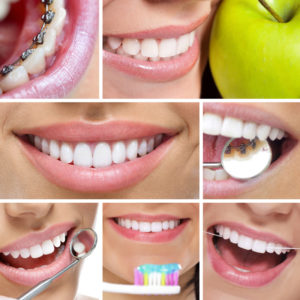
Traditional Braces Vs. Lingual Braces
There are not many differences between lingual braces except for the following:
- Lingual braces are custom-made specifically for a patient. Traditional braces are always the same brackets and wires that are used for all patients. Lingual braces have to be fit to a person’s individual teeth.
- The braces are hidden with the lingual option. Brackets, wires and all metal is attached to the back of the teeth instead of the front. You can go your entire treatment without anyone knowing you have braces.
- This option is ideal for musicians. Brackets and wires on the front of the teeth can interfere with wind instruments in some people. When the brackets and wires are on the tongue-side of the teeth, you don’t get those problems.
- Athletes also benefit because there are no brackets or wires that can shred the cheeks if an injury happens in contact sports.
- You straighten your teeth while keeping your smile bright and beautiful with lingual braces.
We love traditional metal braces, lingual braces and all our other orthodontic options. It generally comes down to aesthetics with most patients, and that’s where lingual braces has traditional metal ones beat. The comparison between ceramic braces and lingual braces is almost exactly the same, as ceramic braces are modeled after traditional metal braces. The only difference is that they are made of white ceramic material instead of metal material.
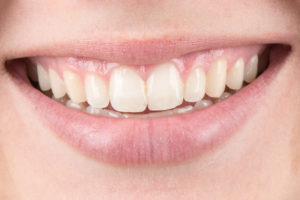
Why Lingual Braces Over Invisalign?
There are many patients that wonder why they shouldn’t simply get Invisalign. These transparent aligners are offered at our office, and they do excellent work to straighten the teeth. We actually recommend these to many teens and adults. However, they do have their limitations, which is why we recommend lingual braces over Invisalign in some cases. Invisalign treatment works to straighten a patient’s mouth in secret. Lingual braces seek to achieve this same incredible benefit. However, only lingual braces can correct bite and alignment problems that are severe.
The metal-and-bracket design makes them incredibly sturdy for drawing a bite in if a person has overbite. It can also do the opposite and correct underbite and other other type of bite problem. However, Invisalign aligners have a much harder time with that because they don’t have brackets and wires. Both options are great if a patient simply wants to straighten their teeth. Both options are also very hidden in the mouth, making them appealing to teens and especially adults. However, when bite problems exist, you want to kill two birds with one stone by straightening and correcting bite. If this is you, then opt for lingual braces instead of Invisalign.
Choosing Your Braces
We take choosing specific braces on a case-by-case basis. There are four amazing braces options available for patients to choose from, and each were designed to target different things that patients need. Patients want the sturdiness of metal braces, but don’t always want them visible. That is why lingual braces are a great hybrid of the other types of braces we offer. You get the functionality and strength of metal, but the hidden feature like Invisalign provides. We want every patient to be sure about their braces option before they have their orthodontic appliance made. To find out which option will suit you best, call Belmar Orthodontics today at (303) 225-9016!
Get Your Braces in Time for Back-to-School

Going back to school can be an exciting time whether you’re a child, teen or an adult. However, if you have recently had your braces put on or plan to get them before school starts, there are some things you should prepare for. Those include planning ahead so that you can clean your teeth at school, that you have food you can eat with braces and more. As you go back to school this year, use these tips for taking care of your braces and for showing them off to your peers!
Should You Get Braces?
Many people see braces and try to decide if they are right for them. Receiving orthodontic care does take time, but it’s time well spent. Most patients are generally wearing their orthodontic appliance for 18-24 months at a time. However, you can achieve a straight smile that will last you the rest of your life.
There are incredible benefits that come with getting braces, and we’re not just talking about getting straighter teeth. Braces can correct a patient’s problems with bite and alignment. These types of problems can create speech impediments over time and can make it difficult for patients to bite, chew, smile and more. Add crooked teeth on top of that, and the teeth also become much more difficult to clean. When they are more difficult to clean, patients generally miss cleaning areas that eventually decay. Without orthodontic treatment, you raise your risk for tooth decay and gum disease, as well as dental emergencies. Crooked teeth and bite problems can lead to broken and cracked teeth over time.
However, braces can get rid of all those risk factors that lead to chronic dental problems. And you don’t really have to do much except keep your braces clean! Studies also show that people who straighten their teeth tend to smile more, and they actually have a major confidence boost that stays with them. Going back-to-school is a great time to get that extra confident boost!

Choosing Which Braces You Want
In the past, patients only had one dental option. Today, you have at least four options. At your consultation, you can learn about and choose from these options:
- Traditional Metal Braces: The metal brackets and wires many people think of when they think “braces”. The metal brackets attach to the front of every tooth and are held in place by a metal wire that goes along the bottom and top teeth. The molars have metal bands that go all the way around the tooth in the back to keep the braces very sturdy.
- Ceramic Braces: These are designed just like traditional metal braces, but they are made from white, ceramic material to blend with the teeth. Even the wire can be made white for patients.
- Lingual Braces: With Incognito Lingual Braces, you can achieve the same results as traditional braces with a hidden treatment apparatus on the tongue-side of your teeth. These braces consist of metal that is custom-molded to fit on the back of all your teeth. The metal covers the entire back instead of simply consisting of a bracket. However, there is still a small bracket that holds the metal wire in place. The main advantage of lingual braces is that they can straighten and correct bite problems without being seen.
- Invisalign: This treatment consists of transparent aligners custom-made for a patient’s teeth that they switch out every week. Over time, crooked teeth become straight. The aligners can be removed for any activity (eating, brushing, sports), however, they can’t correct major bite issues.

Watch What You Eat
With any new thing, there is always a learning curve. Braces are no different. For the first few days, your mouth will have to adjust to having an orthodontic appliance attached to the teeth. The newness of your braces will fade, but the need to take care of them won’t fade. One of the main things you need to watch out for with braces is what you eat. Many students get lunch from the cafeteria, snack bars, or fast food places. If this is you, be careful what you eat and aim to avoid foods such as:
- Hard candies: These generally contain lots of sugar and chewing on them can break brackets and wires.
- Avoid hard foods such as nuts, chips, popcorn (because of kernels), apples, crusty bread, carrots or hard vegetables.
- Ice: Never chew ice, as this can break orthodontic appliances and can crack or break a tooth. Always suck on ice; never chew.
- Sticky Sugary Foods. These include caramels, taffy, licorice, Tootsie Rolls, Starburst, Sugar Daddies, Skittles and candies that are similar.
- Gum: This gets stuck in all your orthodontic appliances and most are sugary, meaning that stuck food will be able to sit on your teeth and eat away at your tooth enamel.
Nobody wants to get back-to-school and have a dental emergency happen. If you always watch what you eat, you don’t have to worry about dental emergencies and serious oral health issues.
Get Your Braces in Time for Back-to-School
Do you want to make an amazing transformation this year? Start with your smile! Your smile is one of the first things others notice. You want to make that smile shine. For the perfect smile you are envisioning, we can help make it a reality! Simply call Belmar Orthodontics today at (303) 225-9016 for your free consultation!
What are the Benefits of Lingual Braces?
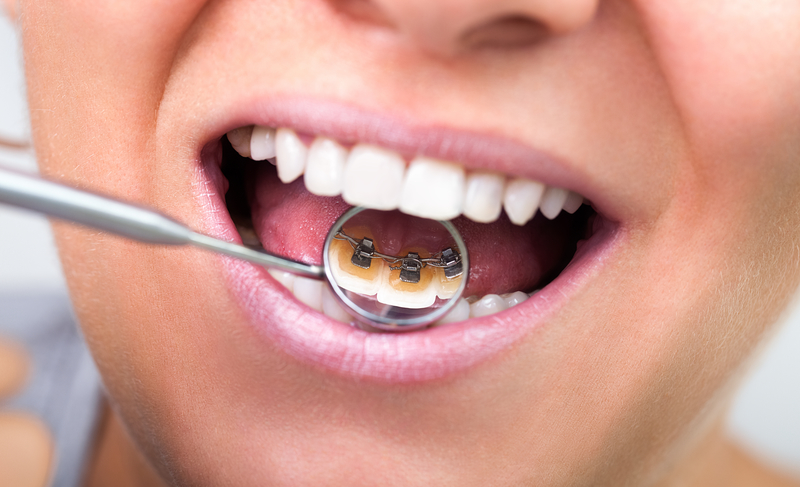
Many patients are getting excited about lingual braces as an option for their orthodontic care. These types of braces can correct long-term or lifetime dental issues. They are also hidden in a patient’s mouth and because they’re not on the front of the teeth, they are a perfect option for athletes or musicians to perform better. Thinking about leveraging the power of lingual braces to straighten your smile? Consider the benefits that lingual braces can offer you and ask about your set today!
What’s the Difference Compared to Other Options?
Lingual braces is an exciting option for patients who want to combine the benefits of Invisalign transparent aligners with the sturdiness of traditional metal braces. These type of braces are also known as “incognito hidden braces” because they rest behind your teeth instead of on the front. They too, are made from metal, except this metal is usually gold instead of silver. Plus, instead of simple brackets and wires, the metal attachments cover the entire back of your tooth surface.
There are brackets and wires, but they are on the tongue-side of your teeth. Lingual braces are amazing because they can achieve the same results as traditional orthodontics in a manner that is inconspicuous and undetectable. They are tightened at each appointment just like traditional braces and can correct bite and alignment issues with ease. How do you benefit from these type of braces?
- Correction of long-term or lifetime dental issues
- Less noticeable orthodontic treatment
- Good orthodontic treatment for athletes and musicians who play wind instruments
- Increased confidence during treatment compared to traditional methods
- Elevated self-esteem after treatment
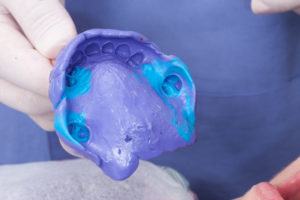
Difference Between Lingual and Traditional Braces
Not all metal braces are alike. Even though lingual braces are made out of metal alloys, they are still different than traditional metal braces. Metal braces rest front and center on a patient’s teeth. They consist of the classic brackets-and-wires set-up, but they can make your smile look gray because of the metal. Depending on your oral health, you can have tooth staining and dental erosion during your time with braces. This can leave marks when the braces come off.
Compared to traditional braces, lingual braces are more ideal for athletes and musicians. Traditional braces can make it difficult for musicians to play wind instruments and can affect how a person blows. For athletes, they have to worry about dental emergencies caused by metal brackets and wires if they get hit in the mouth. There are no brackets or wires on the front of the teeth that will cut up the cheeks if a person gets hit in the face. However, both of these styles of braces are extremely effective at correcting bite and alignment issues.
Comparing Lingual Braces to Ceramic Braces
Ceramic braces are very similar in their style to metal braces. The only difference is that they are made from white, ceramic material instead of metal. Even the wires can be made white to match the teeth. This is a more aesthetic option for teens who like metal braces but don’t want them as noticeable. However, they are still much more noticeable than hidden braces would be. A teen or adult simply has to decide how noticeable they want their braces.
Invisalign Vs. Lingual Braces
If patients want hidden braces, then why not just use Invisalign treatment? This is a great orthodontic option, but it has its limitations. Yes, Invisalign is transparent on the teeth. However, those aligners cannot correct many bite and alignment issues, which many patients need. They are more ideal for patients who only need their smile a bit straighter. For any major orthodontic issue and especially bite problems, Invisalign is not the best option. Lingual braces combine the hidden aspect of Invisalign treatment, but with the sturdy structure of metal braces that can correct bite problems.
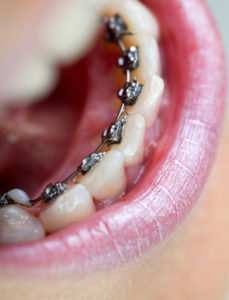
Choose Orthodontic Care
No matter what orthodontic option you choose, simply opting to receive orthodontic care for bite and alignment issues will improve your oral health immensely. Some people skip receiving orthodontic care because they believe they will save all that money. However, crooked teeth and bite issues can actually cost more money in the long run. How you ask? When your teeth are straight, they are very simple to clean with a toothbrush and quick to floss. However, when they are crooked, you will consistently miss many parts of your tooth surfaces. This can lead to quick decay, which will take dental work for every instance of tooth decay.
Flossing also gets very difficult when the teeth are crowded or crooked. A patient may not even be able to pass floss between the teeth if they are too crooked. That’s detrimental to a patient’s health, as 40% of tooth surfaces can only be reached through flossing. That leaves those tooth surfaces open to decay, enamel erosion, staining and infection. If this happens all over your mouth, you’re looking at spending a lot of money over a lifetime to fix all your oral health problems.
Get Your Braces
Opting to receive orthodontic care saves you the headache of bite and alignment issues, crooked teeth, and decay and gum disease that can happen. Correct these issues early-on and enjoy your smile for life. Call Belmar Orthodontics today at (303) 225-9016 to learn about lingual braces and your other orthodontic options!
What Is an Orthodontist?
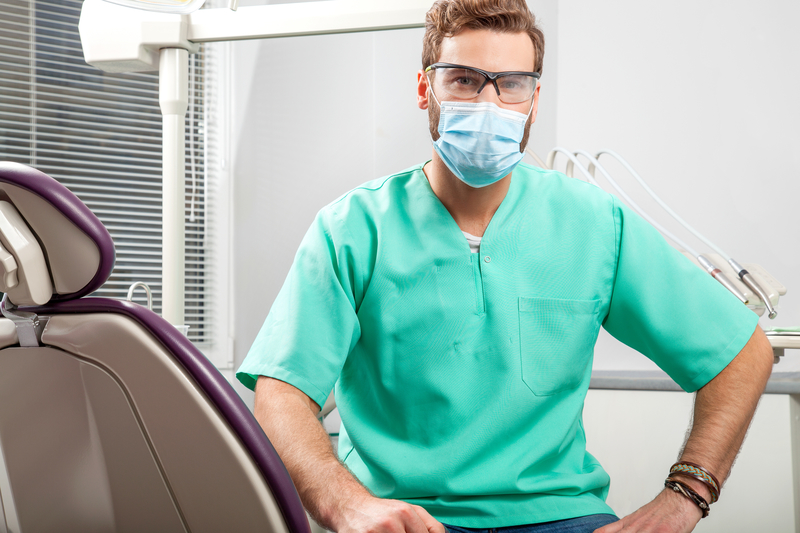
If you want to be an orthodontist, you have at least 10-12 years of schooling ahead of you. Orthodontists are very similar to dentists, but they perform completely different tasks in an office than a dentist would do. This is why you need to see both an orthodontist and a dentist if you have braces. See what services they provide that no one else can!
Want to Become an Orthodontist?
To become an orthodontist, a person has to commit to at least 10-12 years of education, training, fellowships and more. Even after that time, and orthodontist must continue testing and studying throughout the years in order to do orthodontics. An orthodontist is a professional that specializes in correcting crooked smiles, bite and alignment issues, jaw problems and aesthetics of the mouth.
They do this through braces, which commonly consist of metal bracket and wire appliances. Those appliances mold the teeth and jaws into specific alignments and positions. Through focused pressure with these mouth appliances, a person with major bite, alignment, or crooked teeth problems can find themselves with a beautiful, functional smile. This is especially beneficial for patients who have oral health problems that cause them speech impediments and difficulty biting, chewing, speaking and functioning normally.
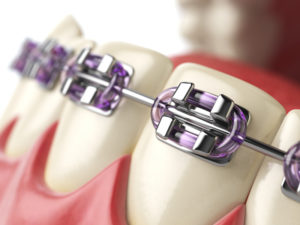
What Does An Orthodontist Do?
An orthodontist is a step above a dentist when it comes to their schooling. To become an orthodontist, a person must complete 4 years of undergraduate schooling at a university. They then apply for dental school and must be accepted. After 4 years of dental school, many students become dentists. However, orthodontists must continue to do at least 2 more years of orthodontic school and fellowships to do orthodontia as a profession.
Even though orthodontists are trained in dentistry, they do different work than dentists. They provide services such as correcting misaligned teeth and smiles, overbite, underbite, crossbite, and other alignment issues. Some are trained to provide surgical orthodontic procedures, or they work closely with an oral surgeon in correcting a misaligned jaw.
For patients who receive surgical orthodontics, an orthodontist will provide pre-surgical orthodontic care to align teeth and jaws as much as possible. A patient will then have oral surgery done to correct issues that can’t be done without surgery. Then, the jaws and teeth are aligned to their final, complete position through orthodontic appliances. If a patient doesn’t receive surgical orthodontics, they generally do 18-24 months of braces to straighten their teeth. Primarily, this is what an orthodontist does: they design braces (based on what type you pick) that fit your smile and that can shape it straight over the course of 1-2 years.
How It’s Different Than Dentistry
Both dentistry and orthodontics focus on oral health and improving a person’s smile. However, dentistry primarily strives to clean the teeth, fix tooth decay, perform root canals and treat gum disease. Patients also receive dental crowns, bridges and implants, and many cosmetic dentistry procedures. If you need teeth whitening or want to improve the look or health of your teeth, seek out a dentist. They can perform teeth whitening services, provide dental veneers and implants, and can help with oral health diseases.
However, if you need your teeth straight in the first place, you need an orthodontist. The American Dental Association recommends that every patient see a dentist at least twice a year to avoid major oral health diseases. You will need an orthodontist at various intervals in your life. However, you don’t see them as frequently throughout life like you would a dentist. When you have crooked teeth or problems with your jaws or alignment, you work with an orthodontist to fix the major issues. Then, a dentist fixes the more minor issues like the color of your teeth.
A dentist is not trained to straighten the teeth even if a dental office provides a transparent aligner service such as Invisalign. You always want to choose a trained orthodontist for properly straightening your teeth so oral issues don’t arise.
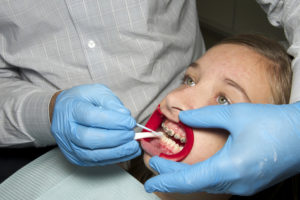
Do You Need Orthodontics?
When battling tooth decay, gum disease, bad breath and more, seek out a dentist. If you want to correct jaw, teeth, alignment, and bite issues, seek out an orthodontist. You may find yourself visiting both often if you receive braces as a child and then later as an adult or teen. Most orthodontists are trained to correct jaw and bite problems in children. You should always take your child in to see an orthodontist by age 7 if you already haven’t. The American Association of Orthodontics recommends this, as major bite and alignment issues of the jaws and teeth can be corrected easily when young. As a person grows older, the jaw hardens and becomes more permanently fixed, and oral health problems are much harder to correct.
If you are deciding to invest in braces, take a look at your teeth. Are they crooked? Do you find that either the upper or lower jaw overlaps the other significantly? Do you have problems speaking, eating, biting or chewing at times? You could benefit from orthodontics! Most people can significantly improve their oral health and their happiness (from having a beautiful smile) if they choose to see an orthodontist for help with their smile.
Dr. Hardy’s Office
Dr. Hardy is an award-winning orthodontist in Lakewood, CO. He is an active member of the American Dental Association and the American Association of Orthodontics. Dr. Hardy works with a team every day to make sure his patients young and old are cared for. At his center, he offers patients the option of getting ceramic, clear braces, traditional metal braces, lingual braces and Invisalign treatment. He can perform surgical orthodontics if needed and pediatric orthodontics. When choosing a center for your family, you want one that can treat patients of all ages and a center whose staff knows how to work really well with children. You can find that at Dr. Hardy’s Belmar Orthodontics office by calling (303) 225-9016!
Lingual Braces: Straighten Your Teeth Without Anyone Knowing!

Lingual braces can achieve the same effect as traditional orthodontics in a manner that is inconspicuous and undetectable. By discreetly attaching the braces to the back of the teeth instead of the front, Dr. T.C. Hardy can help you achieve straight, healthy and beautiful-looking teeth. Consider the benefits of lingual braces when you are deciding which orthodontic appliance you want!
How Do Lingual Braces Work?
No matter what braces option you are going to get, we always meet with patients to first have an orthodontic consultation. At this consultation, Dr. Hardy will examine your teeth, checking their straightness as well as your bite and alignment. The size of your teeth matter if you request to have lingual braces put on your teeth. Dr. Hardy will examine the backs of your teeth to determine if you are a candidate to receive them and if brackets and wires will comfortably fit on the tongue-side of your mouth.
Once Dr. Hardy has determined that you are an ideal candidate for lingual braces, he will take impressions of your teeth that are then sent to a lab for custom-made brackets and wires. At your next appointment, we will gently bond the metal to the back of your teeth with the attached brackets. We will then run a metal wire through the brackets. The process is quite similar to what is done with patients who choose traditional metal braces on the front of their teeth. However, instead of your cheeks adjusting to the feel of the brackets, your tongue will be the part adjusting to the new appliance. At each appointment, Dr. Hardy will examine your teeth and adjust the wires as needed to straighten your teeth properly.
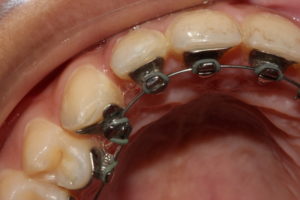
Facts About Lingual Braces
- You can achieve the same results as traditional braces, only with a hidden treatment apparatus on the tongue-side of your teeth.
- These braces have to be custom-made to the back of your teeth, because teeth size can vary from patient to patient.
- Children are not usually candidates for lingual braces. It all depends on their age and the size of their teeth. Baby teeth are small and with many patients, there is not room to fit brackets and wires on the back of the teeth. Children who have larger teeth may be candidates.
- Adults use these braces much more often than teens and children for both reasons of teeth-size and professional/social aspects.
- Patients who play wind instruments will have an easier time playing if they have lingual instead of traditional metal braces.
- A dentist must take continuing education courses and receive additional training in order to provide lingual orthodontic options to patients. This means that not all dentists give patients this option like Dr. Hardy does.
- Brackets placed on the back of the teeth are ones that others will not be able to see. You can go throughout your entire orthodontic process without others knowing that you have braces. However, others will notice your teeth becoming straighter over time.
- Because lingual braces are made of metal brackets and wires (just like traditional braces), they are able to correct bite and alignment issues. Other braces options like Invisalign, are not able to do that.
- You may want to invest in a waterpik for your teeth. Lingual braces have brackets, so food can get stuck in them, which is why you would want a waterpik to get the food out.
- Patients can care for their lingual braces the same as they would traditional metal braces.
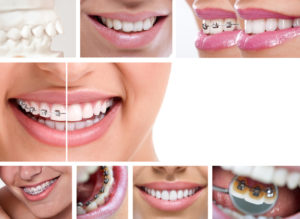
How Do They Compare?
In the past, there weren’t many options when it came to straightening your teeth. Many cultures simply tried cruel methods of pushing and forming the teeth until metal braces were created. Over several decades, metal braces were changed and adapted to how people lived. In modern times, people are ever busy and on-the-go. Aesthetics plays a huge role in how people view themselves and how others view them. This is why hidden orthodontics were created.
Lingual braces are a great way to straighten your teeth in secret. Your other options include:
- Traditional Metal Braces: These are almost the same as lingual braces, except they are made of silver metal alloys instead of gold ones. The brackets and wires go on the front of the teeth, where they are noticeable to others.
- Ceramic Braces: Similar to metal braces, this orthodontic appliance also rests on the front of your teeth. They are made of white, ceramic material, helping them to blend in more with the teeth. However, they are still somewhat noticeable.
- Invisalign Treatment: This orthodontic option involves no brackets and wires bonded to your teeth. You receive a set of transparent aligners custom-made for your teeth each week, that you wear for 20-22 hours of every day. However, although this option makes oral hygiene easier, they cannot help many bite and alignment issues. That is why patients opt for a discreet lingual option that can correct those issues.
Getting Your Lingual Braces
At Belmar Orthodontics, we know that getting braces is a big deal for teens, adults, and even children. Patients worry about their appearance often, which is why options such as Invisalign and lingual braces were invented in the first place. We are excited to be able to offer adults and teenagers an alternative to traditional metal braces with hidden lingual braces! If you want to know more about these braces or want to schedule your consultation, call Belmar Orthodontics today at (303) 225-9016!
Child Orthodontics Compared to Adult Orthodontics
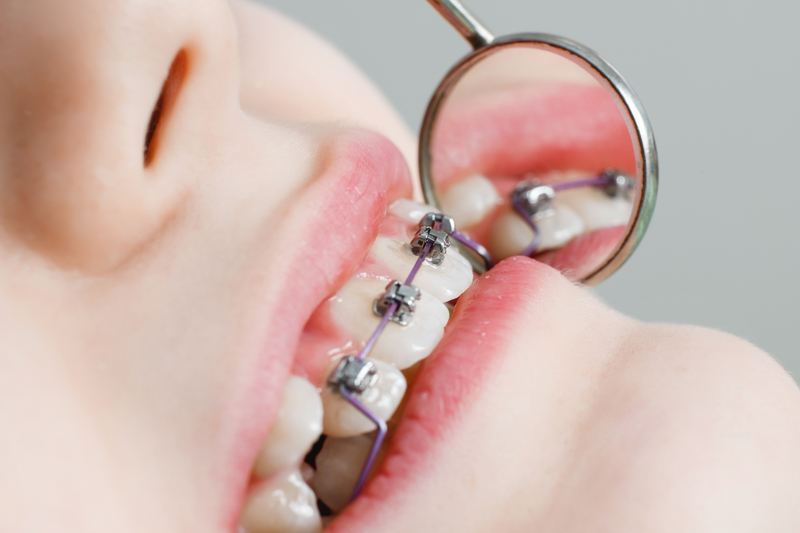
Did you know that about 1/4th of all people with braces are children? Millions of Americans receive orthodontic treatment for bite and alignment correction and for straightening the teeth. However, adults require treatment differently and for longer than a child would need, and child orthodontics have different goals for patients than adult orthodontics do. Both of these areas of orthodontics differ, but are also very similar in techniques used to create a beautiful smile.
Orthodontic Treatment
Orthodontic treatment is one of the easiest ways to help improve your health. Braces can help correct major oral health problems and can help avoid dental emergencies in the future. In children and adults, braces straighten the teeth so that they are aligned properly for speech, eating, biting and more. Straighter teeth are easier to clean and easier to manage, which leads to better health. Teeth must come in at specific places in the mouth for both children and adults. Child orthodontics focuses on that proper bite and tooth placement, and adult orthodontics seeks to improve the look of a smile.
Child Orthodontics
Did you know that children often wear braces, only to get them again as adolescents? Child orthodontics is a popular orthodontic option for at least 1/4th of braces wearers. Dentistry has been around enough centuries to know that the teeth, bite, alignment and growth happen in a specific way. Teeth must come in at the right spot and must be aligned in a specific manner in the jaw. As a child begins to get their baby teeth, some may be crooked. Depending on oral health conditions, and problems such as thumb-sucking, the shape of the teeth and bite can change.
Some children will have teeth that protrude outward, inward, or teeth that are in various directions. This leaves them open to the risk of broken or fractured teeth, tooth decay and problems with speech and development. Child orthodontics is the first phase of getting braces early. It focuses on getting the jaws lined up correctly and the teeth resting on each other in the right way. Once that happens, the baby teeth can fall out and the adult teeth can smoothly come into place. Child orthodontics will correct the major issues a child’s mouth has when they are around 7 or 8 years old. Starting at 11 and later, braces will seek to make the teeth look more attractive.
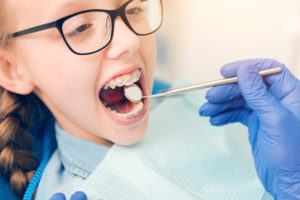
Adult Orthodontics
Most people think that teens make up the majority of patients with braces. However, adult orthodontics is very popular as well, with about 1/4th of all orthodontic patients being adults. There are more adults wearing orthodontic appliances than you realize, especially because of the “invisible options” they have that children don’t have.
Adults have a harder time with straightening their teeth than children do. By adulthood, the mouth and jaws have stopped growing, making them less moldable than a child’s jaws. The treatment that would have been easy for a child may take twice as long for an adult, or may require surgical orthodontics to achieve a straight smile, or proper bite and alignment. However, adults get the benefits of Invisalign treatment and lingual braces, which most children can’t have.
Invisalign is an “invisible” straightening option for adults and teens that uses a strong, clear aligner to straighten the teeth. Digital scanning creates customized aligners that a patient changes out ever 1-2 weeks, which slowly shift the teeth into their proper place. This invisible option allows adults and teens to brush, floss, eat and play sports without brackets and wires in the way. Lingual braces is another “invisible” straightening option. It has metal brackets and wires, except they’re placed on the back of the teeth. Only an adult can use these, as the baby teeth are not large enough for lingual braces to fit. Both adult orthodontics and child orthodontics correct bite, alignment and tooth issues, but the options available to the two age groups differ slightly.
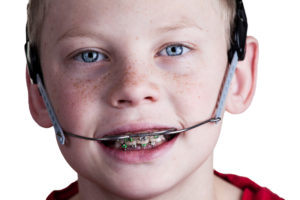
Why Choose Either Option?
When considering orthodontic treatment, there are various aspects you have to think about that include cost, health changes, aesthetic appeal and more. Many people think that braces are very expensive, when they are actually quite affordable. Your family may even save more money over time because of the oral health problems that are avoided by proper orthodontic treatment. A major reason so many people have orthodontic treatment is that they want to improve their smiles. Not only does a straight smile look beautiful, but it helps patients feel more confident. Studies show that child orthodontics helps children feel more confident in school and they do better academically.
Braces can correct speech problems caused by bite and alignment issues. They can straighten the teeth, making them easier to clean, and thus reducing problems with tooth decay, gum disease and bad breath. People socially perceive patients in a more positive way if their smiles are straighter and healthier. No matter if you choose orthodontic treatment for aesthetic appeal or for health reasons, the benefits are worth the time, effort and money you put into your treatment.
Conservative Treatment
Dr. Hardy practices a conservative approach to orthodontic treatment. While it is important for children to have an early orthodontic assessment to look for serious dental concerns (around age 7), the majority of children will not require orthodontic treatment before age 11. Your child might need child orthodontics or they may only need orthodontic treatment as a teen. Some people are naturally born with straight teeth that don’t pose them a problem, or their teeth start to shift later on in life. Whether your child needs child orthodontics or you need adult orthodontics, call Belmar Orthodontics today at (303) 225-9016 for your free consultation!

